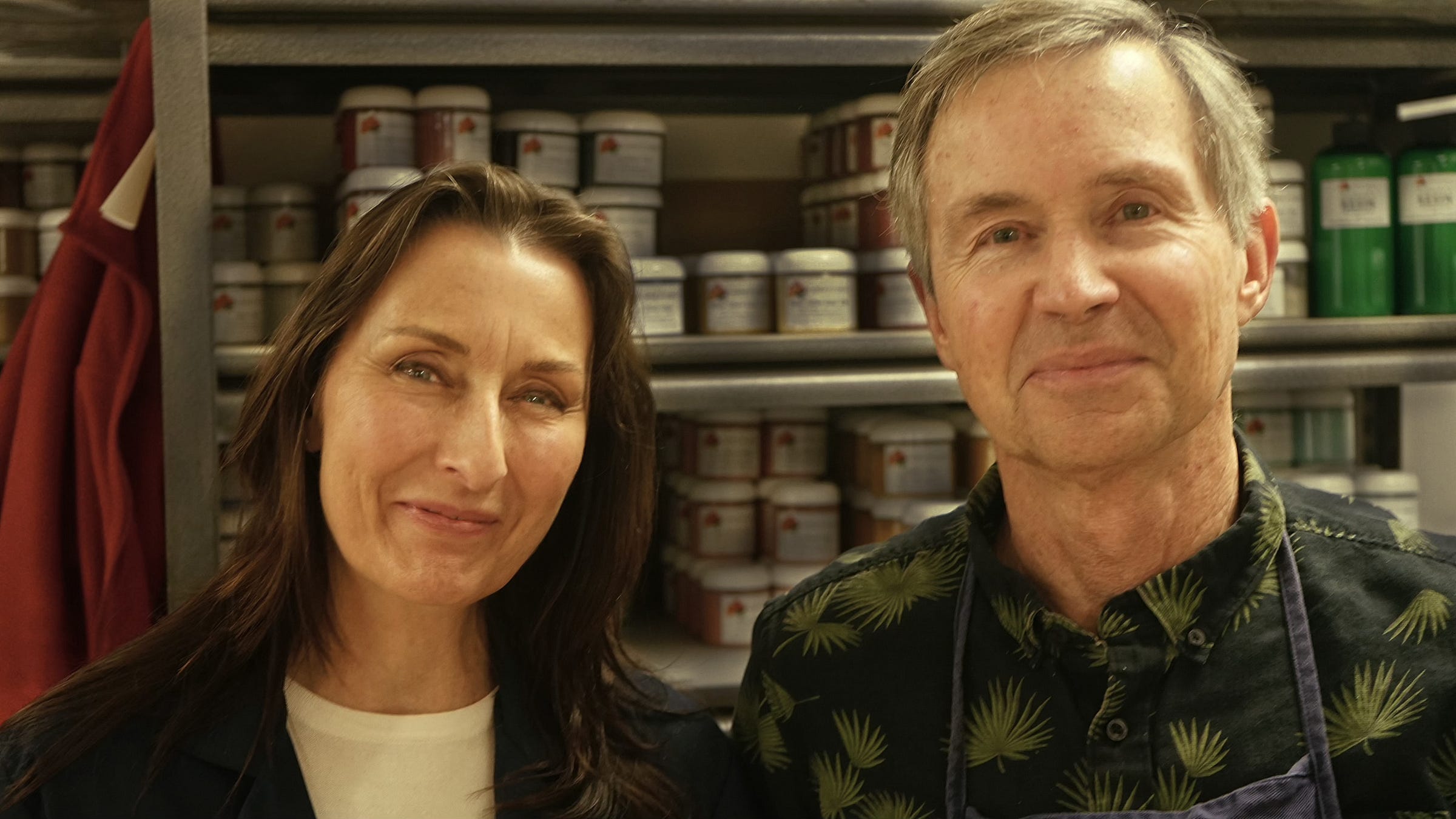Hinesburg’s Earth Pigments hopes to grow color business
In the simplest definition, earth pigments are colorants in powder form derived from naturally colored soils, rocks and minerals — think red clay
By Chelsea Burton
The Record Intern
For Erin and Christopher Allan, their current business, Earth Pigments, arose from a previous one.
Both were living in Arizona, supplying indigenous residents with materials for pow-wow costumes: beads, feathers, leather and pigments. It was, to say the least, a niche market. But then they realized how much wider a market there was for natural pigments. A new business was born and with it, a decision to move to Vermont, to Hinesburg, where Erin had lived years ago.
So now they are selling mineral-based, non-toxic color pigments to artists and manufacturers and home builders and remodelers throughout the U.S. and Canada.
In the simplest definition, earth pigments are colorants in dry powder form derived from naturally colored soils, rocks and minerals – think red clay, for example. The term lends its name to the Hinesburg business: Earth Pigments.
The change in strategy came 16 years ago, in Arizona, when Erin had the idea of creating an online business selling colors made from natural pigments when a supplier told them about the Society of Ochres in France.
The society is a family-owned business that, after a century, is the only remaining company in Europe to mine deposits in the French quarries of Gargas and Rustrel, according to the Earth Pigments website.
The Allans partnered with the French business for their new venture: They would distribute the French products in the U.S. and Canada.
The couple brought their business from Arizona to Vermont in 2020. They set up shop in the Hinesburg village center, where they package and distribute all of their products in an old cow barn turned warehouse. Dozens of shelves fill the space, all lined with the 88 colors the website sells.
Some of the colors occur in nature as is, such as ocher – a clay that ranges from pale yellow to intense red. Umber and sienna are two other common naturally occurring clays. Other colors on offer that aren’t often found in nature are still made from natural elements, the company says. An example is ultramarine blue: its natural form is lapis lazuli, which is reproduced by taking copper and treating it with sulfur, Erin said.
“When you use natural earths, because of its mineral base, there is a light refraction that it provides,” she said. “The colors are unique. You may get something similar synthetically produced, but it’s never gonna be quite the same.”
Earth Pigments sells colorants that have no binding power of their own – meaning they need to be mixed with another substance. The couple sells different mediums, sealants and varnishes to fix the colors to surfaces. The company’s website details the process in a collection of how-to videos and tutorials.
The business is advertising some of its new products, such as Nature’s Resin, a plant-based resin that replaces acrylic, Christopher said. The product can be mixed with any of the company’s pigments to bind or seal paint.
“We’re always trying to find new ways to help people replace toxic materials in their lives,” Christopher said.
The Allans have also added a line of fluorescent pigments called DayGlo, made from recycled landfill plastic. They are “a nice supplement to some of the natural colors,” Christopher said.
For now, it is only the two of them running the business, managing all of the packaging, shipping and website presentation. In their warehouse, the couple even has a small studio to photograph the new colors as they are released.
As the Allans continue to expand their selection, they also hope to open up a brick-and-mortar shop in front of their warehouse. They have started setting up appointments with customers in person so people can see the pigments ahead of time, Christopher said. The couple hopes the storefront will grow their business for artists, homeowners, manufacturers and more.
For more information, go to their website: earthpigments.com
Via Community News Service, a University of Vermont journalism internship, on assignment for The Hinesburg Record.


